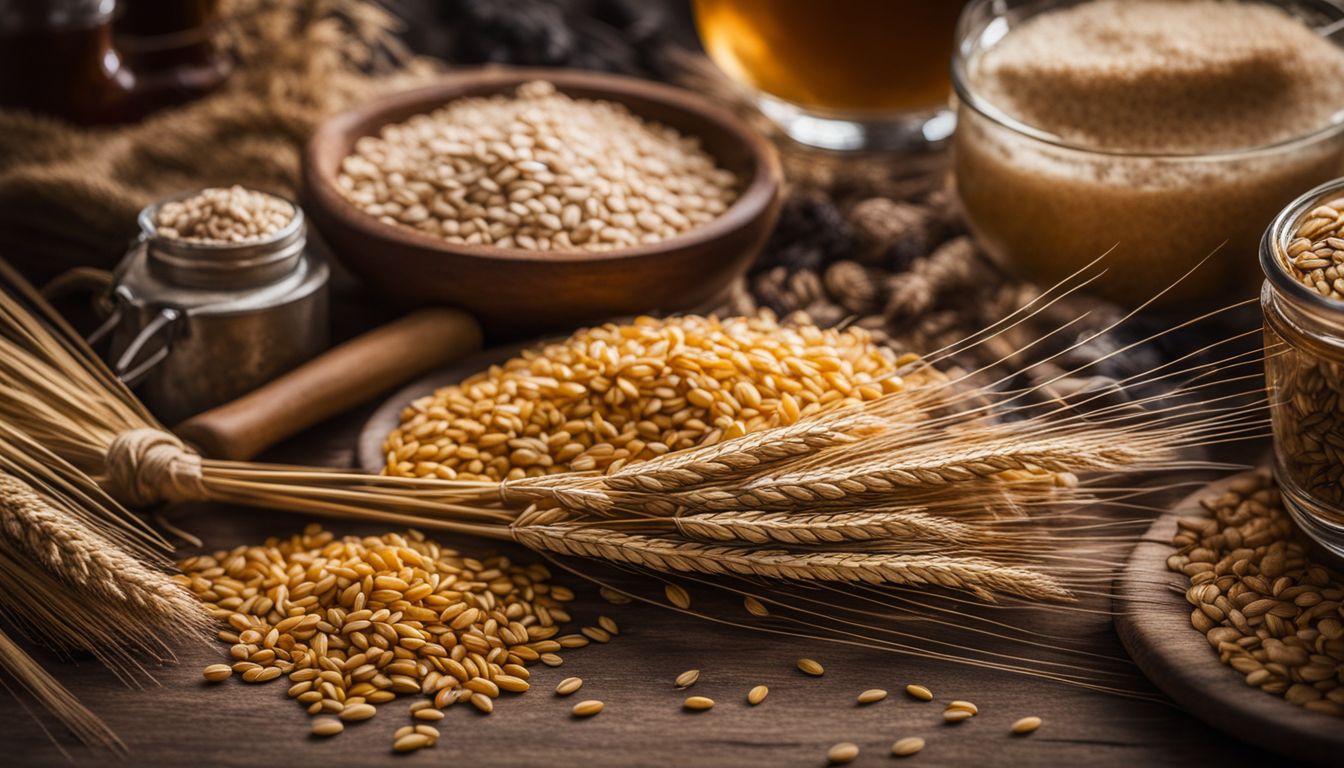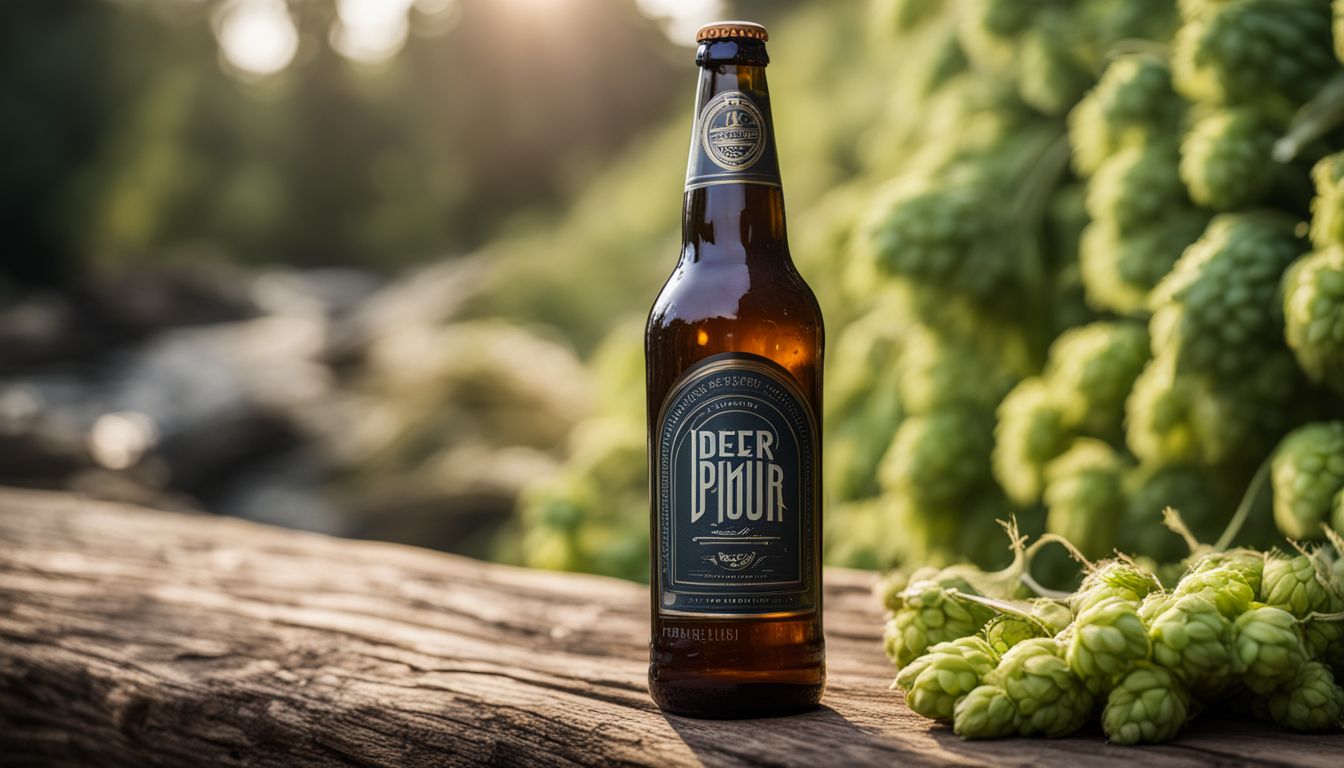Are you a beer enthusiast who’s ever wondered about the alcohol content in your favourite pint and how it affects your body? It may surprise you to learn that the alcohol content in beer can range from a mild 2 percent to a strong 8 percent.
Through this comprehensive guide, we’ll enlighten you on all the facets of beer – its types, the factors influencing its alcohol content, and most importantly, how it impacts your overall health.
Stay tuned if you’re keen to sip responsibly while appreciating every bit of hops magic!
Key Takeaways
- Different types of beer have varying alcohol content, ranging from 2% to 8%.
- Factors such as ingredients, fermentation process, and water used can influence the alcohol content in beer.
- Alcohol can have both short-term effects like hangovers and long-term effects like liver damage and increased risk of cancer.
- Excessive alcohol consumption can lead to health risks, accidents, and legal consequences. It’s important to drink responsibly and know your limits.
Understanding Alcohol Content in Beer

Different types of beer have varying alcohol content, which is measured in percentage. The alcohol content in beer can be influenced by different factors and it is important to read the labels to understand the strength of the drink.
Types and alcohol content of beer

Understanding the types of beer and their alcohol content is essential for informed alcohol consumption. Below is a table that provides an overview of this.
| Type of Beer | Average Alcohol Content (%) |
|---|---|
| Light Lager | 3.2 – 4.2 |
| Pale Ale | 4.4 – 5.4 |
| Stout | 4.2 – 7.0 |
| India Pale Ale (IPA) | 6.2 – 7.5 |
| Porter | 4.0 – 5.6 |
| Wheat | 4.0 – 5.6 |
| Belgian | 4.5 – 9.5 |
Remember, the alcohol content in beer can greatly influence its effects on your body. It’s important to consume responsibly and be aware of how different types of beer can vary in their alcohol content.
Factors influencing alcohol content in beer

Here are some factors that can affect the alcohol content in beer:
- Ingredients: The types of grains used, such as barley or wheat, can impact the alcohol content. Different strains of yeast can also affect how much alcohol is produced during fermentation.
- Fermentation process: The length of fermentation and the temperature at which it occurs can influence the alcohol content in beer. Longer fermentation times generally result in higher alcohol levels.
- Strength of the initial brew: The starting gravity of the beer, which measures the sugar content before fermentation, can contribute to higher or lower alcohol levels.
- Water and dilution: The amount and quality of water used during brewing can dilute or concentrate the alcohol content in beer.
- Brewing techniques: Techniques like dry hopping or barrel aging can influence the flavor profile but generally do not significantly impact the overall alcohol content.
Reading alcohol labels

The labels on alcohol bottles provide important information about the content of the drink. They usually include the percentage of alcohol, which tells how strong the drink is. It’s essential to check this before consuming so that you know how much alcohol you are drinking.
The label might also mention standard drink measurements, which can help you understand how many units of alcohol are in a single serving. This information can guide you in making responsible choices and keeping track of your intake.
By reading alcohol labels carefully, you can make informed decisions and ensure safe consumption.
Effects of Alcohol on the Body

Alcohol affects the body both in the short-term and long-term, impacting various organs such as the liver, heart, and brain.
Short-term effects of alcohol

Alcohol can have immediate effects on your body, especially when you drink beer. Here are some things to keep in mind:
- Hangovers: Drinking too much beer can result in a pounding headache, nausea, dizziness, and dehydration the next day.
- Alcohol poisoning: Consuming large quantities of alcohol quickly can lead to dangerous levels of intoxication that may require medical attention.
- Falls and accidents: Alcohol affects your balance and coordination, increasing the risk of falls and injuries.
- Conflict and risky behaviors: Alcohol can lower inhibitions and impair judgment, leading to arguments or engaging in risky activities.
- Lowered inhibitions: You might feel more confident or outgoing after drinking beer, but it’s important to be aware of potential consequences.
- Memory problems: Excessive alcohol consumption can cause blackouts or gaps in memory.
Long-term effects of alcohol

Long-term effects of alcohol:
- Liver damage: Excessive alcohol consumption can lead to liver diseases such as cirrhosis, where healthy liver cells are replaced with scar tissue.
- Cardiovascular problems: Long-term heavy drinking can increase the risk of high blood pressure, heart disease, and stroke.
- Cancer: Regular alcohol intake has been linked to an increased risk of various types of cancer, including liver, mouth, throat, esophagus, and breast cancer.
- Mental health issues: Alcohol abuse can contribute to mental health problems like depression and anxiety. It can also worsen existing mental health conditions.
- Dependency and addiction: Continued heavy drinking can lead to alcohol dependence or addiction, making it difficult for individuals to function without alcohol.
- Brain damage: Prolonged alcohol use can result in cognitive impairment, memory loss, and diminished brain function.
- Pancreatitis: Chronic alcohol consumption can cause inflammation of the pancreas, a painful condition known as pancreatitis.
- Weakened immune system: Alcohol weakens the immune system over time, making individuals more susceptible to infections and illnesses.
- Nutritional deficiencies: Alcohol interferes with the body’s absorption of essential nutrients like vitamins and minerals, leading to deficiencies that affect overall health.
- Relationships and social consequences: Long-term excessive drinking can strain relationships with family and friends and negatively impact professional life.
Binge drinking and its effects

Binge drinking, which involves consuming a large amount of alcohol in a short period, can have serious effects on your health. It increases the risk of falls, burns, car crashes, and memory issues.
Binge drinking is also a significant contributor to alcohol-related deaths. In addition to these immediate dangers, it can lead to long-term health problems such as liver damage, heart disease, and addiction.
It’s important to remember that moderation is key when it comes to alcohol consumption and avoiding binge drinking can help protect your overall well-being.
Risks and Consequences of Excessive Alcohol Consumption

Excessive alcohol consumption can lead to a range of health risks, including liver damage, heart disease, and increased risk of accidents. It is important to understand the potential consequences of heavy drinking and make responsible choices when consuming alcohol.
Read on to learn more about the dangers associated with excessive alcohol consumption.
Health risks

Drinking too much beer can have negative effects on your health. Here are some health risks to be aware of:
- Excessive alcohol consumption can damage your liver, leading to conditions like liver cirrhosis and fatty liver disease.
- Regular heavy drinking increases the risk of developing high blood pressure, which can lead to heart disease and stroke.
- Alcohol weakens your immune system, making you more susceptible to infections and diseases.
- Drinking too much beer can cause weight gain due to its high calorie content, leading to obesity and related health problems.
- Alcohol abuse is linked to an increased risk of certain types of cancer, such as breast, liver, and mouth cancer.
- Excessive alcohol consumption can result in mental health issues like depression and anxiety.
- Heavy drinking can negatively impact your sleep patterns and quality of sleep.
Increased risk of accidents

Excessive beer consumption can greatly increase the risk of accidents. When we drink too much alcohol, our judgment and reaction times become impaired. This means that we may not be able to make good decisions or respond quickly in dangerous situations.
Additionally, excessive alcohol consumption can lead to drowsiness and loss of coordination, making it even more likely for accidents to happen. It’s important to remember that alcohol affects everyone differently, so even if you think you’re okay to drive or perform certain tasks after drinking beer, your abilities may still be compromised.
To stay safe and avoid accidents, it’s best to drink responsibly and know your limits.
Legal consequences

If you drink beer excessively and then drive, you can face serious legal consequences. Driving under the influence of alcohol is against the law in most countries, including the UK.
If you are caught driving with a blood alcohol concentration (BAC) above the legal limit, you could receive a hefty fine, lose your driver’s license, or even go to prison. Not only does drunk driving put your life at risk but it also endangers others on the road.
So it’s important to always drink responsibly and never get behind the wheel after consuming alcohol.
Responsible Alcohol Consumption

Knowing what is considered a standard drink can help individuals make informed choices about their alcohol consumption.
What is considered a standard drink

A standard drink is a measure used to determine how much alcohol you are consuming. In the UK, a standard drink typically contains about 14 grams of pure alcohol. For beer, this roughly equates to one pint at around 5% ABV (alcohol by volume).
It’s important to note that different countries may have different definitions of a standard drink. Understanding what constitutes a standard drink can help you keep track of your alcohol consumption and make informed choices about how much you’re drinking.
Tips for avoiding or reducing the effects of alcohol
- Pace yourself: Drink slowly and alternate between alcoholic and non-alcoholic beverages to reduce the risk of becoming intoxicated.
- Eat before and while drinking: Having a meal or snacks before consuming alcohol can slow down its absorption into the bloodstream, reducing its effects.
- Stay hydrated: Drinking water or other non-alcoholic beverages alongside alcohol can help prevent dehydration, which is a common side effect of excessive alcohol consumption.
- Set limits and stick to them: Determine how many drinks you are comfortable having in one sitting and be mindful of your consumption.
- Avoid mixing alcohol with drugs: Mixing alcohol with prescription medications or illegal substances can have dangerous and unpredictable effects on the body.
- Plan your transportation: Ensure that you have a designated driver, use public transportation, or arrange for a ride-sharing service to avoid driving under the influence.
- Be aware of the signs of intoxication: Monitor your own behavior and recognize when you may be reaching dangerous levels of intoxication.
- Know your personal limits: Understand how alcohol affects you personally and learn to recognize when you have had enough to drink.
- Stay accountable: Drinking with friends who also understand responsible consumption can help keep everyone in check.
- Seek support if needed: If you find it difficult to control your alcohol intake or suspect that you may have an issue with alcoholism, consider seeking professional help or joining support groups such as Alcoholics Anonymous (AA).
Conclusion

In conclusion, understanding the alcohol content and effects of beer is crucial for making informed decisions about alcohol consumption. By knowing the types and factors that influence alcohol content, reading labels, and being aware of its effects on the body, we can better understand both the benefits and risks associated with beer.
Remember to always consume alcohol responsibly and be mindful of your limits to prioritize your health and safety.
FAQs
1. How do I determine the alcohol content of beer?
You can determine the alcohol content of beer by checking the label for its ABV (Alcohol By Volume) percentage, which indicates the amount of alcohol present in relation to the total volume of liquid.
2. What are the potential effects of consuming beer?
Consuming beer in moderation can lead to relaxation, lowered inhibitions, and a slight euphoric feeling. However, excessive consumption may result in impaired judgment, coordination, and increased risk of accidents or health issues.
3. Can drinking different types of beer have different effects?
Yes, different types and styles of beers can have varying levels of alcohol content and flavors that can influence their effects on individuals. It’s important to be aware of these differences when consuming different beers.
4. Is it safe to mix different alcoholic beverages with beer?
Mixing alcoholic beverages can increase the overall alcohol content consumed and heighten its effects on the body. It is generally not recommended as it may increase intoxication levels and impact judgment and physical coordination more severely than consuming one type alone.
